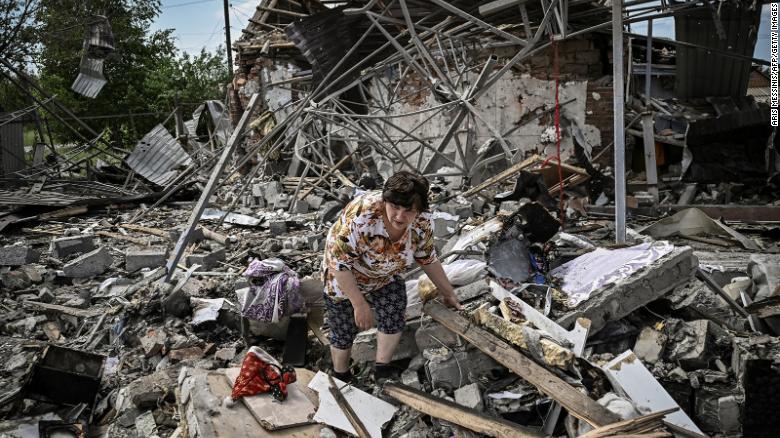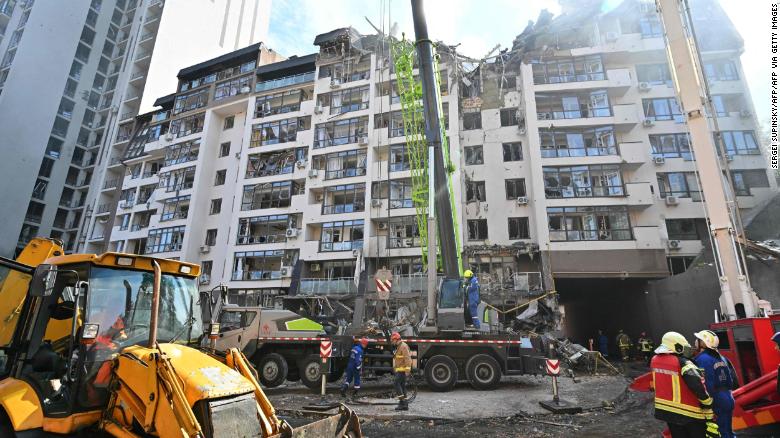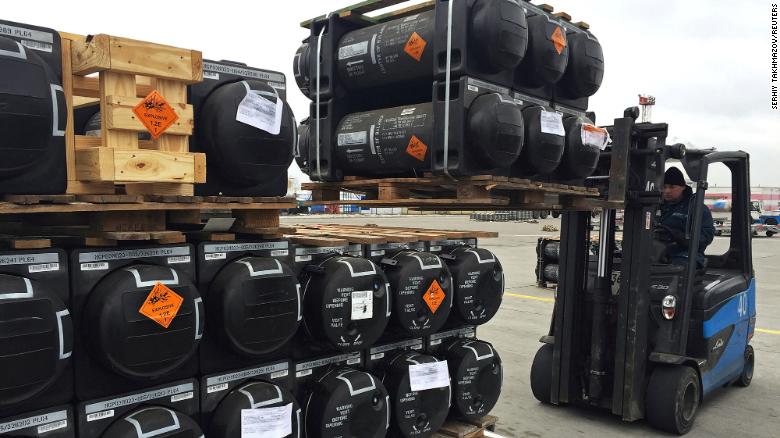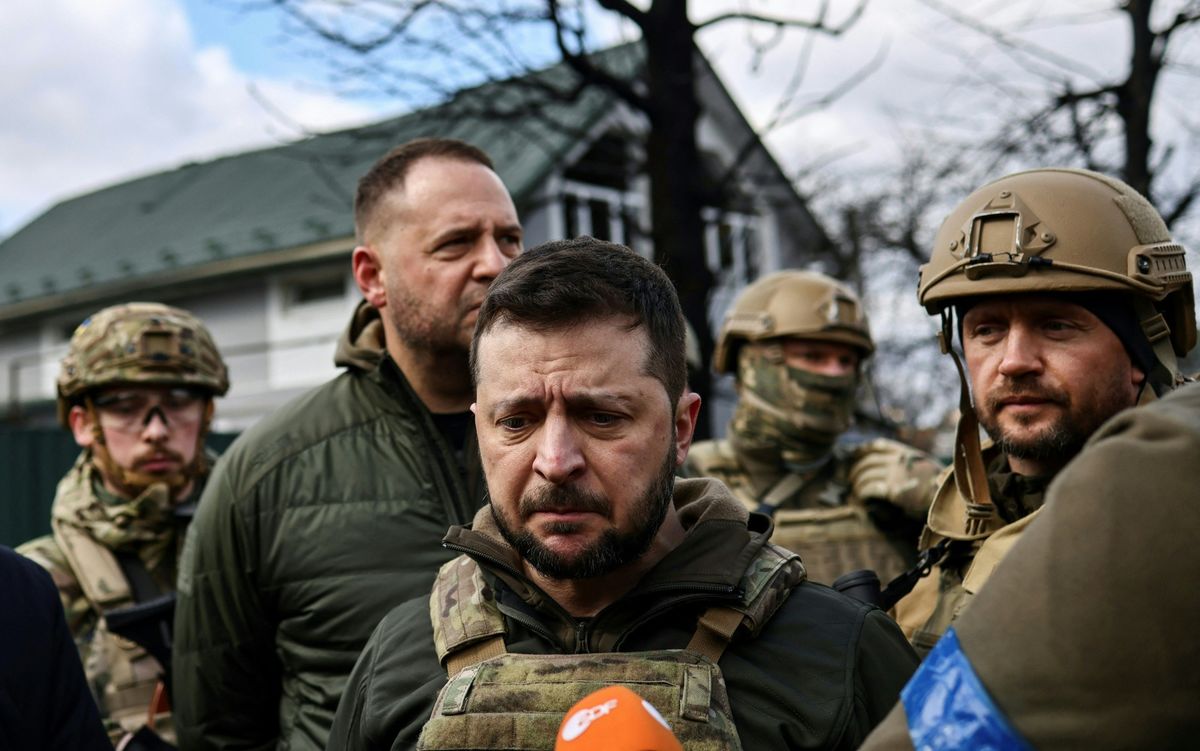(CNN)When Vladimir Putin refocused his war in Ukraine on the country’s east three months ago, he did so bruised by the failures of his initial lunge towards Kyiv and desperate for a face-saving success.
After a slow and bloody march through Luhansk was finalized with the capture of the city of Lysychansk, the Russian President might consider himself halfway there.
But the war has arrived at another crossroads and fighters on both sides are steeling themselves for a third act of fighting that could tip the balance of the conflict.
“It’s a very attritional struggle,” said Justin Bronk, a senior research fellow for Airpower and Technology at the Royal United Services Institute (RUSI), describing the tone of the war after three months of fighting in Donbas.
“It’s a struggle between two armies, both of whom have taken huge losses and are very close to exhaustion.”
Putin’s next move is anticipated to be a drive into Donetsk, which if captured would fulfill the Kremlin’s primary objective: overrunning the entire Donbas region of eastern Ukraine, which has housed Russian-backed separatist factions since 2014.
But when and how that takes place is unclear. While Russia has continued intense airstrikes on various fronts in Ukraine, the US-based think tank Institute for the Study of War (ISW) said Sunday that Russian ground troops were in the middle of an operational pause to “rest, refit, and reconstitute.”
That could give Ukraine’s army time to prepare to defend the parts of Donetsk it still holds; chiefly the industrial belt running south from the city of Sloviansk. And the threat of Ukrainian counter-offensives elsewhere in the country, including the key southern city of Kherson, remains.
The next phase of full-scale fighting, when it does break out, may not be the last. But it may determine the future of Ukraine’s heartland region — and analysts say it will go some considerable way to determining the war’s results.
Lessons from Luhansk
The past three months of grueling, grinding warfare in Donbas have looked almost nothing like the opening act of Russia’s invasion, which saw scattergun incursions from north, east and west and ended in a decisive failure to overrun Kyiv and other key Ukrainian cities.
Instead, the Kremlin’s refocused effort has tightened the boundaries of the war, zeroing in on a key path across Luhansk and towards Donetsk to which the bulk of Russia’s resources were directed.
“The second phase of this war has seen Russia returning to basics,” Max Bergmann, the director of the Europe program at the Center for Strategic and International Studies, told CNN.
That has resulted in sluggish but steady progress for Russia, which has won several weekslong battles for strategic cities and exposed limitations in Ukraine’s arsenal. “They’ve used their mass, their artillery assets, and (have been) pummeling Ukrainian forces while operating in a slow grind,” Bergmann said.
Its advantages in weaponry and firepower have started to show. “All of (Russia’s) electronic warfare, air defense and armored formations can be concentrated on very small areas,” allowing them to “create local superiority” over Ukraine’s more stretched, defensive positions, said Bronk.
“Round one was a knockout for Ukraine. In round two, the Russians won on points,” said Bergmann in his assessment of the war’s opening phases.
But three months of war has taken its toll on both armies, and the capture of Luhansk brings two exhausted militaries to an inflection point.
“Russian forces will likely continue to confine themselves to small-scale offensive actions as they rebuild forces and set conditions for a more significant offensive in the coming weeks or months,” the ISW said on Thursday.
Fighting has continued near the Donetsk-Luhansk border; the Ukrainian military on Friday listed more than 40 towns and villages in Donbas that have come under attack in the last 24 hours, acknowledging “partial success” of a Russian attempt to advance on one front near the city of Bakhmut.
But the ISW nonetheless has assessed that an operational pause for Russian ground troops is underway, and the pace of Russian territorial gains dropped last week following their takeover of Luhansk.
The benefits of some form of lull for both armies are obvious; Russia’s depleted forces need recuperation, while Ukraine’s military is in a race to receive, deliver and become familiar with Western equipment.
“Russian troops that fought through Severodonetsk and Lysychansk very likely do need a significant period in which to rest and refit before resuming large-scale offensive operations,” according to the ISW.
“It seems like we’re in a stasis, but it’s a very unstable balance and we don’t know which way it will break,” Bergmann said. “Behind the scenes, there will be a frantic effort on both sides to prepare for future offensives.” Whichever side uses this period more effectively could be able to seize the upper hand when all-out fighting resumes.

A Ukrainian service member in Severodonetsk, days before Russia took control of the key city.
The war’s next flashpoints
Russia’s anticipated next move will be to continue the path it has forged through Luhansk, moving into Ukrainian-controlled parts of Donetsk and attempting to wear down and encircle Ukrainian troops in that oblast too.
Doing so would deliver the symbolically significant Donbas region to Moscow — and complete the main objective that Putin laid out as he launched his invasion in February, when he falsely claimed that those regions are spiritually and culturally Russian, and that Russian speakers were being persecuted there.
But if the timeline and tactics used in Luhansk are repeated in its neighbor region, it will take another bitter and bloody fight.
“There’s two names that are sadly going to become very familiar” as the key battles in the next phase of fighting — the cities of Sloviansk and Kramatorsk, in northern Donetsk. “I suspect they will be the next Severodonestk and Mariupol,” said Samir Puri, a senior fellow in urban security and hybrid warfare at the International Institute for Strategic Studies (IISS), who worked as a ceasefire observer in Donbas between 2014 and 2015.
Those cities have been primed to become flashpoints in the war for months; they now sit surrounded to the east and south by Russian-controlled territory and their capture would be a major breakthrough for the Kremlin.
“Probably, they will [attack Sloviansk]. Probably, that is why the incoming hits have become more frequent,” the head of the city’s military-civilian administration, Vadym Liakh, said on Wednesday, adding that currently Ukrainian forces were holding Moscow’s armies on the Siverskyi Donets river.

Residents look for belongings in the rubble of their home after a strike destoyed three houses in the city of Sloviansk last month.
“I think that as soon as the enemy is able to carry out assault operations, it will begin the destruction of the infrastructure and the city itself,” Liakh said.
The tenor of fighting in the region is likely to look similar to Russia’s drives into cities like Severodonetsk and Lysychansk, whose fall marked the end of Ukraine’s defense of Luhansk.
Ukraine’s defense is again expected to be stubborn. “They want to make this as hard and long a slog as possible for the Russians,” said Bergmann. “That’s how they have pursued this war; they have fought the Russians for every inch of territory, and when it becomes a tactical mistake to keep fighting they withdraw, but not precipitously.”
“You fall back, but as you fall back, you fight.”
But as with Luhansk, Russia will hope to seize the front foot and grind down the Ukrainian resistance, which will struggle to launch effective offenses. “(Ukraine) will have the ability to slowly bleed the Russians through Donetsk,” but may lack the “availability of infantry and armored formations that are equipped and fresh enough to punch forward,” said Puri.
“They’re having to experience a military metamorphosis to get to that offensive capability.”
There will, meanwhile, be flare-ups in other regions that could disrupt Russia’s main objectives in Donbas.
In recent weeks Ukraine has regained Snake Island and had some success with counter-offensives near Kherson, southern Ukraine, which are now ramping up and forcing Russia onto the defensive.
On Monday night, the Ukrainian military struck what it said was a Russian ammunition depot in the town of Nova Kakhovka in Kherson region, in what appeared to be one of the largest attacks inside Russian-occupied territory since the war began. A Russian official said the Ukrainian strike was carried out with a long-range HIMARS artillery system supplied by the United States, but claimed the attack hit a fertilizer warehouse and homes.
Ukraine has begun targeting Russian command posts and ammunition dumps far behind the front lines in both Kherson and Donbas, using newly supplied Western weaponry that has a much greater range than its previous artillery systems.
Serhii Khlan, an advisor to the head of Kherson civil military administration, said Tuesday: “We have already launched attacks along almost the entire front line” — and the Russians were now reinforcing their checkpoints “because the partisan movement is intensifying in the Kherson region. He added that Russia is “preparing for street battles” in the city.
Meanwhile, Ukrainian news outlet Ria-Melitopol reported last week that large amounts of Russian military equipment has been seen moving through Melitopol, including tank and armored vehicle convoys, towards Kherson and Zaporizhzhia. Last week, Russian-appointed authorities in the Kherson region arrested the elected Ukrainian mayor of the city, Ihor Kolykhaiev, hours before announcing plans for a referendum to join Russia.
“The focus for the Russians very much is still in that small area (in the Donbas), whereas for the Ukrainians it seems to be pushing forwards and creating a breakthrough in Kherson,” Bronk said. Doing so “would create really quite a serious problem for Russia.”
Kherson was seized and occupied by Russia in the early days of the invasion. If the Ukrainians were able to seize it back, it would disrupt Russian supply lines, cut its land bridge to Crimea and represent a significant boost to morale.
Grasping for firepower
Russia’s war in Ukraine is pushing towards the six-month mark, and the course of its next phase will depend heavily on the firepower and weaponry each side can still draw on.
The head of the Luhansk region military administration, Serhiy Hayday, said this week that Ukraine is inflicting significant losses on Russia’s armies in the Donbas, and claimed that with the help of additional Western long-range weaponry, “the advantage of the enemy in personnel will be leveled.”
The Russian Ministry of Defense does not regularly report the number of dead and injured among its forces and CNN could not independently verify Hayday’s claims about Russian casualties. Howevery, independent analysts and observers, including some Russian military bloggers, have criticized the effort made by Moscow to capture the city of Lysychansk, saying it was too costly.
“We’ll get a good sense of the depths of Russia’s military reserves” as they push into Donbas, Bergmann said. “The bombarding strategy works if you have a defense-industrial base that is pumping out munitions … (but) they have huge stockpiles, huge reserves.” It also forces an expensive and time-consuming effort to rebuild decimated cities like Mariupol, where virtually all infrastructure was destroyed during Russia’s assault.

Ukrainian rescuers work outside a residential building hit by Russian missiles in Kyiv in June.
Some analysts have speculated that Russia’s increasing use of older, less precise missiles like the KH-22, first developed in the 1960s, suggests its reserves are becoming depleted.
Soviet-era tanks have also been introduced to the frontlines; as early as May, 50-year-old T-62 tanks were being brought out of “deep storage” to assist the effort, according to British intelligence.
Ukraine faces the opposite problem. The country is being sent vast swathes of high-tech, Western weaponry on which it is heavily reliant, and officials are asking at each opportunity for more. But the hodgepodge arrivals of various fighting systems from dozens of countries is providing Ukraine’s military with both a lifeline and a headache.
“It’s a bit of a logistical nightmare; they’re getting lots of different versions (of weaponry) from lost of different countries,” Bronk said. “They don’t take the same ammunition — they have different logistics (and) different maintenance concerns.”
Once weapons arrive at the frontlines — and that process requires a complex supply chain — soldiers need to be taught how to use them.

Western military aid has been arriving in Ukraine for months, but getting it to the frontlines and training soldiers is a complex task.
In some cases, that even requires troops to leave the country. The British army has in recent weeks trained hundreds of Ukrainian troops in Wiltshire, southern England, while Germany has said it plans to teach soldiers how to use the multiple launch rocket system Mars II.
“Ukriane has an immense logistical challenge: they have to shift a military that was rooted in Russian and Soviet equipment, and modernize towards using NATO equipment — while fighting a war,” Bergmann said.
“The big open question is whether (they) can really incorporate the Western weaponry they’re receiving being Russia can reconstitute their forces.”
Source: https://edition.cnn.com/2022/07/13/europe/ukraine-russia-next-stages-donetsk-intl/index.html



